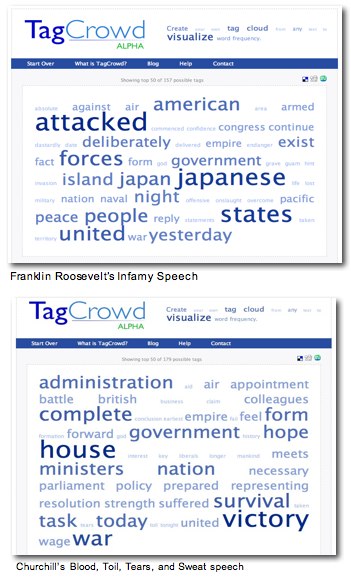One of the many distinctions that I frequently make in my presentations is a comparison between how my generation views information and my children’s generation. For us (oldsters), information is a product to be consumed. We purchase a book so that we can read it, a CD so that we can listen to it, a DVD so that we can watch it. As I watch my son and daughter in their information experiences, I see that at least part of the value of the content that they use is in what they can do with it — text, video, audio, images, that can be mixed and remixed together to make something new, valuable, or interesting. For them, information is a raw material.
 I’m currently preparing for a virtual presentation (10 minutes) that I will be doing with a specific and non-techie audience, about online databases and primary-source content. My angle will be using the information as a raw material. I have to confess that anticipating preparations for this presentation have not had me on the edge of my seat. I continue to dread virtual events. I’m an eye-contact guy. But as I have gotten into it, I am starting to get kind of excited about it.
I’m currently preparing for a virtual presentation (10 minutes) that I will be doing with a specific and non-techie audience, about online databases and primary-source content. My angle will be using the information as a raw material. I have to confess that anticipating preparations for this presentation have not had me on the edge of my seat. I continue to dread virtual events. I’m an eye-contact guy. But as I have gotten into it, I am starting to get kind of excited about it.
Think about taking Roosevelt’s Day in Infamy speach and running it through a tagcloud generator, and then laying that next to Churchill’s Blood, Toil, Tears and Sweat speech. Or annotating paragraphs of The Federalist Papers using Diigo, and then inviting students to turn those paragraphs into meeting places to discuss their import. Or taking a painting of a famous American Civil War battle, and then zooming in to specific spots, moving around, and telling a story about the battle, the war, the times — ala Ken Burns. Or creating collages of Civil War era portrait photographs, and asking students to look into the eyes of history — and tell their story.
Not just learning the information —
But working it!
Tags: warlick, education, technology, history, digital content

David, I’ve just been shown the National Archives site, which is amazing. So far, though, I haven’t seen a way for students to save and use the information as raw material. However, there must be a way! You can create movies and posters and have them emailed to you. Worth a visit, if you haven’t seen it. http://www.digitalvaults.org/
Though they are charging $1 per, Radiohead has released the individual stems, five total (Voice, Drums, Guitar, Bass, Sound Fx), that make up their song “Nude.” They are encouraging people do download and remix the stems, make their own version of the song, and upload it to their website. Though many would find it hard to justify spending $5 for the stems of one song, the people who will participate are probably the same people that bought the album when you could “name your own price.”
I think this falls right in line with your idea of users expecting to do more with their information.
I’ve got a blog on primary sources http://averyoldplace.blogspot.com Might give you some ideas. My students’ latest endeavor is using http://www.mnemograph.com to do a comprehensive timeline of the history of the Titanic. You can see our Titanic website here http://connections.smsd.org/titanic. We used the original datasets to study different aspects of the voyage, The Titanic site is under construction but will be finished by end of May. Last years project was CSI: Cemetery Scene Investigation–http://connections.smsd.org/csi Great work using Raw materials.
What I’ve been saying for many years is that this ‘content’ – the various bits of multimedia that they use to create things – constitute ‘words’ in a ‘vocabulary’ that they use to communicate with each other.
Paradigm examples of this include the short YouTube video or the lolcat. These bits of multimedia speak to people, and – interestingly – convey their meaning not simply from combining the meanings of the words, but by serving as cultural and contextual cues.
(Of course, when we understaqnd that, we understand that word-based langiuage works in exactly the same way).
I’m just wondering, but might this mean that there is a syntax to assembling multimedia bits to convey meaning?
There’s a possibility. Certainly, there is something like a syntax for visual imagery. See eg. http://www.downes.ca/post/44146 and http://www.downes.ca/post/34272
David,
I have been doing a similar talk on advanced tagging uses and the example I use is GW’s Inaugural address and his state of the union address a year later.
You can see a similar variation on this theme on page 13 of this presentation:
http://www.hcthiele.com/Thiele-Tagging.pdf
Hank